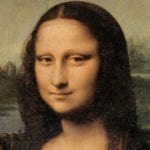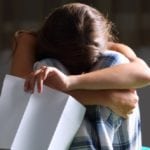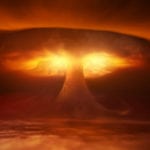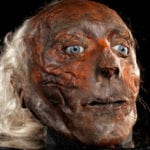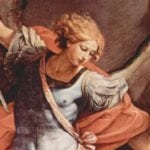 Weird Stuff
Weird Stuff  Weird Stuff
Weird Stuff  Our World
Our World 10 Ways Your Christmas Tree Is More Lit Than You Think
 Movies and TV
Movies and TV The 10 Coolest Stars to Set Sail on The Love Boat
 History
History 10 Things You Didn’t Know About the American National Anthem
 Technology
Technology Top 10 Everyday Tech Buzzwords That Hide a Darker Past
 Humans
Humans 10 Everyday Human Behaviors That Are Actually Survival Instincts
 Animals
Animals 10 Animals That Humiliated and Harmed Historical Leaders
 History
History 10 Most Influential Protests in Modern History
 Creepy
Creepy 10 More Representations of Death from Myth, Legend, and Folktale
 Technology
Technology 10 Scientific Breakthroughs of 2025 That’ll Change Everything
 Weird Stuff
Weird Stuff Ten Bizarre Facts About The Doge Meme
 Our World
Our World 10 Ways Your Christmas Tree Is More Lit Than You Think
 Movies and TV
Movies and TV The 10 Coolest Stars to Set Sail on The Love Boat
Who's Behind Listverse?

Jamie Frater
Head Editor
Jamie founded Listverse due to an insatiable desire to share fascinating, obscure, and bizarre facts. He has been a guest speaker on numerous national radio and television stations and is a five time published author.
More About Us History
History 10 Things You Didn’t Know About the American National Anthem
 Technology
Technology Top 10 Everyday Tech Buzzwords That Hide a Darker Past
 Humans
Humans 10 Everyday Human Behaviors That Are Actually Survival Instincts
 Animals
Animals 10 Animals That Humiliated and Harmed Historical Leaders
 History
History 10 Most Influential Protests in Modern History
 Creepy
Creepy 10 More Representations of Death from Myth, Legend, and Folktale
 Technology
Technology 10 Scientific Breakthroughs of 2025 That’ll Change Everything
10 Reasons Leonardo Da Vinci Is Overrated
You know the name. When it comes the Renaissance, his is probably the first one that comes to mind, conjuring up a sense of ingenuity and enigmatic, creative prowess. For most people, Leo might as well be the only guy who did anything during the Renaissance. But when you examine the evidence, the story of Leonardo da Vinci as an historical icon is bunk in practically every aspect of his legend.
The man had lots of ideas, including some interesting ones. But the truth is a bit of a letdown. Though he was surely more talented than most of us, there were far superior practitioners in every single field Leonardo dabbled in. The era was so crowded with geniuses that if you walked down any street in 16th-century Italy, you would were bound to brush past one or two that accomplished feats of more lasting significance than he did. When you compare his legacy to other enlightened minds of his era, his work does not stack up very well.
10His Painting Skills Were Surprisingly Dodgy

Even if you accept that the Mona Lisa is the greatest painting of all time because that is what we have always been told, it is pretty much like every other run-of-the-mill portrait commissioned back then, except that her eyebrows wore off.
Most of Leonardo’s paintings are standard portraits and religious scenes, not exactly earth-shattering, and they are so boring that you could not pick out any of them out of a line-up. In a few decades, men like Titian and Raphael would produce works easily beyond Leonardo. And nobody who looks at the work of Caravaggio, who painted many of the same biblical themes and subjects and worked within a century of da Vinci, could disagree that he makes Leonardo’s best pieces look hopelessly antiquated and conventional.
Composition-wise, The Last Supper isn’t anything special either, and regardless of style, there is actually a major flaw hidden within the work that most people do not even know about. Any master artist can tell you that The Last Supper is a technical disaster. The fresco began to fall apart within Leonardo’s own lifetime due to his own lack of knowledge of how to correctly apply the special egg-tempera paint he prepared. That leads to our next point . . .
9In A Head-To-Head Contest With Michelangelo, He Lost—Badly

Lest The Last Supper sound like a one-time mistake, the error was repeated again. In a competition with Michelangelo to decorate opposing walls of the Palazzo Vecchio in Florence, in what should been the most exciting art spectacle in history, da Vinci failed monumentally. He didn’t know enough about his craft to execute the project.
He mistakenly tried to apply oil paint to an unprepared wall. The colors of his painting, The Battle of Anghiari, ran in the humid air, a blunder he never recovered from. Leonardo walked away in frustration. The painting competition was over before it even got interesting. Michelangelo emerged triumphant with his Battle of Cascina fresco in the battle of geniuses.
As fate would have it, Michelangelo got snatched up by the very impressed Pope, leaving his uncompleted wall to be destroyed by envious locals who despised his talent. Leo’s Battle of Anghiari was painted over by a nobody to fix his amateurish-looking mess years later.
8His Most Famous Inventions Were Not Original

Leonardo da Vinci is known to have been an inventive mastermind of the first order. But there is a slight hitch in this preconceived notion: It is a lie.
The “helicopter” he famously designed was not a helicopter but an inclined screw. He borrowed the design verbatim from a long-known Chinese kid’s toy without grasping (or caring) that this toy did not spin upward by its own force but was intended merely to twirl down. His helicopter, as it appears to anyone who understands the most basic of physics, is not airworthy. It cannot be made to fly and it never will. Da Vinci did not really comprehend aerodynamics or the necessity of an engine for powered human flight or the physics of propulsion.
He gets credit for a lot of machinery and innovative designs, like the hang glider, to name just one. But he was not the first to design a hang glider, nor the second. The other two guys—an English monk and an Muslim polymath named Abbas ibn Firnas—who did design them test flew them with varying success despite the very dangerous realities of flinging oneself off a ledge. Any technology or modification of any existing device that is depicted anywhere in his notebooks is assumed by less stringent historians to be his, but research usually proves this to be verifiably incorrect.
7He Was A Mediocre Sculptor

If you’re looking to Leonardo’s great sculptures to redeem him, you will sadly never find them. None exist anywhere. The only existing physical statue we have to evaluate his ability is a conventional bronze equestrian model statue, complete with an awkward metal strut supporting the massive weight of the horse and rider. A side note to keep in mind: The primary advantage of bronze over marble was that you do not need struts to support bronze if you know how to balance the weight properly, which Leonardo did not, based on what is left of the model. So it is reasonable to conclude his grasp of metalworking was fairly substandard, and the myth of the artist’s genius and mastery of science evaporates in one single prototype.
Compared to someone like Gian Lorenzo Bernini, the gulf between a true artist and a dabbler becomes strikingly clear. Bernini arguably pushed the medium to its ultimate level with his The Rape of Proserpina. The marble detail is so fine that you can see skin realistically rippling under fingers, individual teardrops, and wisps of blowing hair—all beautiful enough to distract us from the unpleasant fact that we are witnessing some seriously messed up Greek mythology. Leonardo’s giant horse statue on the other hand, was commissioned by the Duke of Milan but never was constructed because Leonardo never figured out a way of casting it. The Duke, Ludovico Sforza, openly wondered if he was wasting his time with Leonardo because his approach to the project was so lax.
Leonardo da Vinci never got further than the drawing board phase on Sforza’s horse for the same reason he never completed his celebrated The Battle of Anghiari: He most likely did not understand his own craft despite what we all like to think. After Leonardo’s plodding first few steps, the Duke pulled the plug. If Leonardo had not wasted so much time, Sforza might have found a replacement soon enough, and the fabulous equestrian statue might have been erected.
6 His Real Inventions Were Junk

Da Vinci’s inventions were awesome, right? That’s a fair question to shout angrily at the screen as you read this, but his inventions were more often than not harebrained or dead ends. There is a good reason they were not constructed from his blueprints; they were not practical nor necessary. Most were abandoned in the early stages and were not workable without a lot of added parts or modifications.
Producing sketches is a large part of Leonardo’s legacy. But to call yourself an inventor, you should also produce viable prototypes and then work out the kinks. There doesn’t seem to be much proof he ever did work past the preliminary stages on the vast majority of his drawings. The robotic soldier he made was just a parlor trick that rattled around, by historians’ best estimates. The contraption only functioned when modern engineers added parts and fixed the faulty design.
His tank, when tested in real life, was painfully slow in ideally dry and flat terrain (a far cry from realistic 15th-century battlefield conditions) and would have concussed and permanently deafened the poor serfs inside who fired the canons. Self-propelled armored vehicles were, interestingly, not new. Any claim that he could have changed the face of warfare is wishful thinking.
As for the perpetual motion machine he supposedly built, physicists since at least the 18th century will remind us that 100-percent energy efficient machines cannot exist. Modern science has rejected that idea. Leonardo did not come up with that idea nor perfect it either. We can stop pretending like he was onto something there or ahead of his time. It is instances like this that indicate he was trapped firmly within the medieval mindset.
While Leonardo was inventing a parachute 400 years before anyone accidentally found a logical use for it, he gave up on a conical bullet design (i.e., the bullet used today), despite working for despots who fought wars for a living and who could have used it.
5He Copied His Legendary Notebooks From Others

Da Vinci did keep interesting notebooks, and had he kept on developing upon the ideas and refining them, he might have changed the world. But scholars today openly admit that those notebooks are probably copies . . . of copies.
Mariano Taccola was another eccentric creative type in Italy who kept notebooks, and it was from these that Leonardo got his trademark Vitruvian Man (as well as many of his fantastic blueprints). Some historians further believe that a mathematician named Giacomo Andrea actually deserves the credit.
Neither did Leonardo invent underwater demolition, another innovation posthumously assigned credit for. His optical “death ray” was borrowed from Archimedes. The flywheel was already conceived centuries before by some other guy we do not care to learn about, and though Leonardo never bothered to find anything to do with his version, the flywheel is yet another gadget he is granted the credit for dreaming up.
There has some speculation that many of his inventions might very well have originated with designs of Chinese origins, which makes a lot of sense considering the Chinese invented such staples of modern civilization as the printing press, cannons, rockets, rifles, and paper in pre-Columbian times.
4He Was Not A Respected Civil Engineer In His Time

His civil engineering track record is worse than you think for the simple reason he couldn’t secure contracts nor deliver anything he promised. Other than a proposed bridge that was not built, an insane scheme to reverse the flow of the Arno river—which failed miserably when his contingency plan featuring earthen dams collapsed in a rainstorm—and some other local projects for Venice including a dike (which was rejected as over-priced), da Vinci accomplished nothing despite the massive acclaim he gets as a skilled civil engineer. Designing grandiose projects is not the sign of a good designer, as any engineer can tell you.
Generally, his ideas were too fantastic or complicated to be practically implemented, and they were always too expensive. His plans didn’t solve problems efficiently but instead posed more. When a Norwegian team tried to actually construct one of Leonardo’s designs, more out of curiosity than for any practical use, they ran into the same problem as did the 16th-century Italian dukes. It cost too much.
3His Anatomical Work Was Not Important

Dissections of corpses was all but banned as an immoral practice by the Church authorities, therefore Leonardo’s anatomical drawings were all that much more important, many suggest. However, his contemporaries—Michelangelo, Durer, Amusco, and Vesalius—all made laborious studies of dissections as well, work more impressive not only artistically but scientifically because they actually tried to pass on their observations to others to expand the limits of human knowledge. Leonardo, again, is one in a crowded field.
Leonardo took extreme precautions to prevent anything he learned from being used by outsiders by writing his notes backward. Charles Estienne wrote an entire detailed series on the human body, depicting the internal organs, muscles, arteries, and veins for academic use, while Leo’s notes were kept secret for centuries. His arguably greatest (and sole) contribution to science is completely redundant, paling in comparison to other pioneers.
2He Left No Great Formulas, Discoveries, Theorems, Hypotheses, Philosophical Treatises Or Breakthroughs

Leonardo did not have much to say of new or lasting importance when it came to chemistry, medicine, sociology, astronomy, mathematics, or physics either, as one might think for an individual of his level of superstardom. He left no treatise or thesis and had no astounding concepts, equations, techniques, or groundbreaking theories to call his own like Newton or Francis Bacon.
His lone resonating scientific idea was his hunch that the Great Flood of the Bible probably didn’t happen based on his observations of natural rock formations, which he conveniently kept to himself instead of using to question the status quo. He was skilled in science, maintained a basic understanding of the human body, and possessed a healthy skepticism, but to call him a scientific “genius” seems unwarranted in comparison to the pantheon of ignored luminaries of the age like Gilbert, Fibonacci, Brahe, Mercator (not to mention the ancient Greeks and Medieval Muslims) who all exerted tangible, lasting influence on the sciences during the Renaissance and even today.
1He Was An All-Around Terrible Role Model

Leonardo was not a thwarted genius. A lot of great thinkers were able to realize their ideas under just as much social pressure and limitations.
Nobody was in a better position than Leonardo; he had the best teachers and patrons. Leonardo’s former overseer, Filippo Brunelleschi, was a master goldsmith who also dabbled in architecture and civil engineering like Leonardo. That is where the similarities end. Charged with completing the dome of Florence’s Duomo, arguably the most recognizable building of the period, he completed it after all the other architects had failed for decades. Brunelleschi not only connived to get his archrival off his back in a maneuver straight out of Machiavelli, he then proceeded to custom build the astoundingly modern cranes needed to complete the unprecedented construction project. His brilliant innovations genuinely changed his world and remain cultural and architectural milestones, in his spare time discovering linear perspective.
Roughly the same time da Vinci was studying his dissections, Bartolomeo Eustachi was teaching and writing books on dentistry and the inner ear and doodling his own models, creating far more demanding and anatomically accurate diagrams that still look like they could have come from modern anatomy textbooks. They even named a body part after Eustachi for his effort. Giordano Bruno was a scholar, poet, mathematician, and mystic, best remembered for accurately guessing the that stars are just other suns and that they logically should have their own planets, suggesting alien life exists like many modern astrophysicists do now. Daring to question prevailing religious dogma, he went one step beyond Copernicus and actively dismissed the tenets he thought silly and unscientific. Then he was executed as a reward.
Da Vinci, meanwhile, proposed incredible machines, which he found impossible to complete or sell to clients, and it might be surmised he simply did not care to understand them. While others were dying for their right to question power in the name of science or speak out against religious intolerance, da Vinci kowtowed to despots and power-hungry aristocrats.
Nathan Williams is a freelance writer based in Ohio. You can read some of his work at Cracked.com here.
